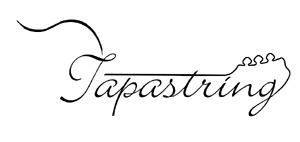The
"Vintage Jack"
Installation Tips
Test the fit of EVERYTHING before making any of
the final connection or installation of anything.
The
LAST step in the installation process is to
seat the "Vintage Jack" into place using light pressure and a little
"twist". If you like, you can use a little powdered rosin on the
tapered end of the Vintage Jack to make the installation more secure.
We DO NOT recommend the use of glue or
other adhesives to retain the "Vintage Jack".
The
NEXT TO LAST step in the installation
process is usually to permanently mount the pickups.
The first step in installing
your "Vintage Jack" is to remove your existing end pin. Most guitar
endpins are held by the friction fit of the taper on the endpin itself.
If the fit is especially tight you will need a non-maring tool to grip
the endpin so that you can give it a firm pull and twist to remove it.
You could use a pair of pliers padded with a piece of leather, or a
better safer tool would be Stewart MacDonald's (www.stewmac.com) #1774
end pin grip tool. Some endpins are glued in place (Collings, some
Taylors and a few others). If your end pin is glued in, you will need to
cut off the button end of the end pin, redrill the hole with a 1/4"
drill and ream out the 5 degree taper. Stewart MacDonald's #4323 endpin
reamer is the correct tool for that job. If your end pin is difficult to
remove, or if you are uncertain about the work, consult your local
luthier for professional help.
Now you can test the fit of your "Vintage Jack" in the endpin hole of
your guitar. The shoulder of the button on the "Vintage Jack" endpin
should fit up close to (1/32" - 1/16")but not actually contact the body
of your guitar. If your "Vintage Jack" does not enter far enough into
the endpin hole, check the condition of the hole. Sometimes there is
considerable roughness, unevenness or possibly glue residue in the endpin
hole. If this is the case, you will need to clean up the inside of the
hole. The object here is not necessarily to enlarge the hole (a change
in hole diameter of .0025" will make a 1/32" difference in the depth fit
of the "Vintage Jack" into the hole), rather it is to smooth up the
roughness or unevenness to improve the fit. There are several ways to do
this. A luthier might use his endpin hole tool (Stewart MacDonald
#4323), turning it backwards to burnish rather than ream the hole. A
player with limited access to specialized tools might attach a small
piece of 320 or 400 grit wet-or-dry sandpaper to his guitar endpin and
use that with a very light touch to smooth and burnish the endpin hole.
There are undoubtedly many other methods that will give satisfactory
results. If the "Vintage Jack" seems to be too small for the endpin hole
in your instrument -- e-mail me (keith@tapastring.com) or call
719-846-7954 -- shims, tape, or other such stuff is probably not a good
solution. There can be much variation in the size of endpin holes and it
may be necessary to machine a special "Vintage Jack" for a custom fit to
your guitar.
Your "Vintage Jack" is equipped with 3 wires -- 2 shielded audio wires
and one unshielded black wire. You may only need one of the shielded audio
wires. One of the shielded audio wires is marked with a section of black
heat shrink tubing -- this is used for single pickup installations
(Mono) or the primary pickup in dual pickup systems (Stereo). The
unmarked shielded adudio wire is for the second pickup in dual pickup
systems (you may not need this wire). The black wire is used to switch the
battery on pickup systems with onboard active electronics (You may not
need this wire either). The unused wires may either be cut off short, or
coiled and secured inside your guitar for possible future use.
Wiring the Vintage Jack to your pick up will
require soldering skills and the actual connections will vary depending
upon your choice of pickups.
Use string to
measure before cutting and soldering the pickup/Vintage Jack wires.
Tape one end of the string to where the pickup will be and thread the
other end out the endpin hole. Be sure to allow enough extra
length to allow you to make the solder connections.
Measure twice - cut once. Tape the wires
together to simulate the "cut length" and do a "dry run/test fit" of
ALL parts before cutting, soldering, or
permanently mounting the pickups.
The LAST step in the
installation process is to seat the "Vintage Jack" into place using
moderate pressure and a little "twist". If you like, you can use a
little powdered rosin on the taper of the Vintage Jack to make the
installation more secure. Use a Q-Tip or small brush to dust a little
powdered rosin into the endpin hole and onto the tapered portion of the
endpin. While we DO NOT recommend the use of glue to retain the "Vintage
Jack" -- if you must -- use only a very small drop of white wood
glue, a little goes a very long way. (Someone may want to remove
the "Vintage Jack" someday and that person might be you).

